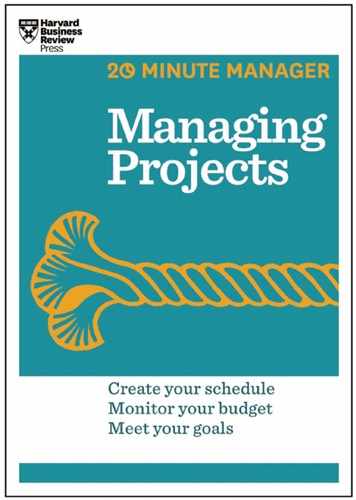Dealing with Your Project’s Problems
Managing projects often means dealing with the unexpected, which can be both exciting and nerve-racking. You’ll face problems that you aren’t sure how to handle—and sometimes these can threaten the project’s success.
Scope creep
One of the most common issues is scope creep. Your client or some group of stakeholders wants you to add new deliverables to the project. (In software circles, this phenomenon is sometimes called “feature creep.”) This is only human: once people see that you can probably accomplish A, B, and C, they begin thinking that D and E might be good as well. It’s why some homeowners set out to replace a sink and a counter-top and end up remodeling their kitchens.
As project manager, you have an obligation to consider reasonable changes in scope. However, you also must remind stakeholders that they can’t increase scope without also increasing the budget, adding time, or both. Unless those changes can be made to the satisfaction of all concerned, it’s your job to stick to the project’s original scope.
Delays
It’s also common to fall behind schedule. Some delays are unavoidable, but often you can remedy or improve the situation. The first step is to recognize the problem. If you’ve been monitoring progress carefully, you’ll quickly notice when schedules are readjusted to accommodate delays or unexpected bottlenecks. The second step is to address the situation with your team. Team members may have ideas about how to get around the problem or compensate for it by implementing other parts of the project faster than planned.
TIPS FOR CONTROLLING PROJECT SLOWDOWNS
Try these approaches before assuming you’ll miss the project deadline:
• Reexamine budgets and schedules to see if you can make up the time elsewhere.
• Determine whether you can drop any elements or features.
• Deploy more resources—but weigh the additional costs against the importance of the deadline.
• Substitute a readily available item or seek alternative sources for whatever is causing the bottleneck.
• Offer bonuses or other incentives for on-time delivery.
• Demand better compliance. (This may require support from upper management.)
• Renegotiate with stakeholders to increase the budget or extend the deadline.
Budget overruns
Cost overruns happen all the time, but that doesn’t make them any easier to deal with. When you notice that costs are creeping upward beyond what you have budgeted, you really have only three choices.
• Identify ways to reduce other expenses in those line items. If the hours for task #1 are exceeding your budget, maybe you can get task #2 or #6 done faster and more cheaply than planned.
• Find savings elsewhere in the budget. Look at every line item to see whether you can reduce expenditures below budgeted levels.
• Inform your stakeholders or client of the cost overruns in hopes of getting more resources allotted to the project. If you choose this route, be aware that it will be difficult—and that you’d better have a good explanation for why your costs are exceeding budget.
One important rule always applies: small cost overruns are easier to handle than big ones. If you stay on top of your expenditures week in and week out, you’ll be better able to address overruns before they spiral out of control.
People problems are often the most difficult challenges in project management. Rather than ignoring, denying, or avoiding them, address them quickly and decisively. The list of problems in figure 6 will help you recognize and deal with some of the different situations you’ll encounter.
Try to handle people problems before they get too big. Pay attention to small signs, such as a team member’s increased irritability, loss of enthusiasm, or difficulty making decisions. Communicate with your team as frequently as you can, particularly when you sense trouble. Weekly staff meetings may not be enough; daily communication—with individuals and with the team as a whole—maybe necessary.

WHAT ABOUT THE THINGS YOU CAN’T CONTROL?
Here’s a nightmare scenario for any project manager (fortunately, it’s fictional):
Last year, the holiday season was not a happy one for Randy. When Bright Light, Inc., failed to deliver a key part, the whole Tyranna-Bot project had come to a grinding halt. The only Tyranna-Bots to hit the market in time had been drawn from existing stock. This year, Randy found a more reliable vendor and built extra time into the schedule, yet here he was, facing another disaster. The chips that made Megala-Bot talk were defective. The supplier was scrambling for more, but there would be another serious delay, and the extra time in the schedule wouldn’t cover it. Randy didn’t want to stop the project, as he had last time, but how could he keep the job on schedule? The advertising blitz was under way and customers were waiting for their Megala-Bots. Randy did not want to disappoint them—or his boss.
What to do? Randy has to begin thinking of ways around the bottleneck. That probably means scouting for other vendors, paying more for extra production runs, and lining up last-minute distribution channels. He also needs to review his critical path to determine whether any adjustments in sequence can be made; for example, can packaging be prepared prior to the receipt of the finished product rather than waiting until after delivery?


